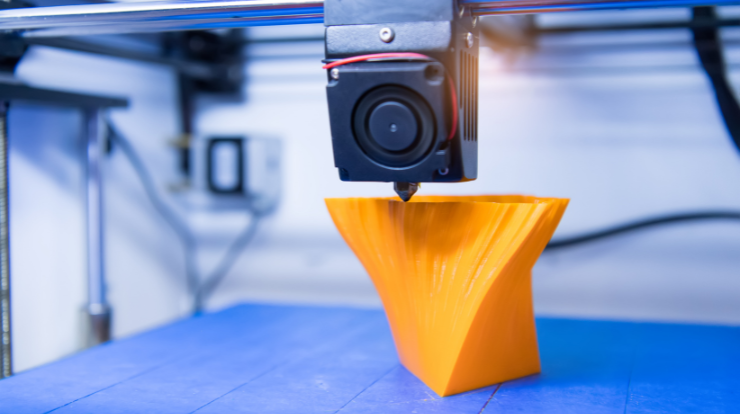The United Arab Emirates (UAE) has set forth a vision for a diversified and innovative economy, aiming to reduce reliance on traditional industries and embrace emerging technologies. 3D printing, also known as additive manufacturing, plays a crucial role in realizing this vision. In this article, we will explore how 3D printing contributes to the UAE’s vision for a diversified and innovative economy, focusing on its impact on economic growth, fostering innovation, and enabling sustainability.
Economic Growth and Job Creation:
One of the primary objectives of the UAE’s vision for a diversified economy is to drive economic growth and create employment opportunities. 3D printing has the potential to spur economic growth by:
Attracting Investment: The adoption of 3D printing UAE technology has the potential to attract local and foreign investments, leading to the establishment of manufacturing facilities, research centers, and specialized service providers. These investments contribute to job creation, economic diversification, and the development of a vibrant ecosystem around 3D printing.
Enhancing Manufacturing Competitiveness: 3D printing allows for more agile and cost-effective manufacturing processes, enabling businesses to remain competitive in the global market. By embracing additive manufacturing, the UAE can enhance its manufacturing capabilities, reduce dependence on imports, and drive export-oriented growth.
Localized Production: 3D printing enables localized production, reducing the need for extensive global supply chains. This localization contributes to economic resilience, as it minimizes the impact of disruptions in global logistics and ensures a steady supply of critical components and products. It also opens avenues for small and medium-sized enterprises (SMEs) to participate in manufacturing and create localized business opportunities.
Fostering Innovation and Entrepreneurship:
The UAE aims to foster a culture of innovation and entrepreneurship as part of its vision for a diversified economy. 3D printing plays a pivotal role in this regard by:
Enabling Rapid Prototyping: 3D printing allows for quick and cost-effective prototyping, enabling entrepreneurs, startups, and innovators to test and refine their ideas. This accelerates the innovation cycle, reduces time to market, and encourages experimentation and creativity in various sectors.
Customization and Personalization: 3D printing enables the production of customized and personalized products, offering a competitive advantage to businesses and fostering customer-centric approaches. By embracing customization, the UAE can drive innovation and create unique value propositions across industries, such as healthcare, fashion, and consumer goods.
Collaboration and Co-Creation: 3D printing encourages collaboration and co-creation among different stakeholders. By facilitating partnerships between businesses, academia, and research institutions, the UAE can leverage collective expertise and resources to develop innovative solutions and address complex challenges. This collaborative approach strengthens the innovation ecosystem and promotes knowledge-sharing.
Access to Advanced Technologies: Embracing 3D printing provides access to advanced manufacturing technologies and processes. This exposure to cutting-edge technologies fosters a culture of technological innovation, upskilling, and knowledge transfer. It enables the UAE to remain at the forefront of emerging trends and positions it as a regional innovation hub.
Enabling Sustainability and Resource Efficiency:
Sustainability is a key component of the UAE’s vision for a diversified economy. 3D printing contributes to sustainability and resource efficiency by:
Waste Reduction: 3D printing produces less waste compared to traditional manufacturing processes. It is an additive process, where material is selectively deposited, resulting in minimal material waste. This reduces the environmental impact and supports the UAE’s commitment to waste reduction and sustainability.
Localized Manufacturing: 3D printing facilitates localized manufacturing, reducing the need for long-distance transportation of goods. This localized approach helps to minimize carbon emissions associated with global supply chains, contributing to a more sustainable and environmentally friendly economy.
Design Optimization: With 3D printing, complex geometries, and optimized designs can be achieved, resulting in lightweight, resource-efficient products. By leveraging the capabilities of additive manufacturing, the UAE can develop products that maximize performance while minimizing material usage, energy consumption, and environmental impact.
Sustainable Materials: 3D printing allows for the use of sustainable materials, such as recycled plastics and bio-based polymers. By promoting the adoption of environmentally friendly materials, the UAE contributes to a circular economy, reduces reliance on non-renewable resources, and fosters sustainable manufacturing practices.
Conclusion:
3D printing technology aligns closely with the UAE’s vision for a diversified and innovative economy. Its impact on economic growth, innovation, and sustainability is profound. By embracing 3D printing, the UAE can drive economic growth by attracting investments, enhancing manufacturing competitiveness, and creating employment opportunities. Additionally, 3D printing fosters innovation and entrepreneurship by enabling rapid prototyping, customization, and collaboration.
It empowers individuals, startups, and businesses to unleash their creative potential and bring new ideas to market. Furthermore, 3D printing contributes to sustainability by reducing waste, enabling localized manufacturing, optimizing designs, and promoting the use of sustainable materials. As the UAE continues to embrace and invest in 3D printing technology, it positions itself as a global leader in additive manufacturing and paves the way for a diversified, innovative, and sustainable economy.




